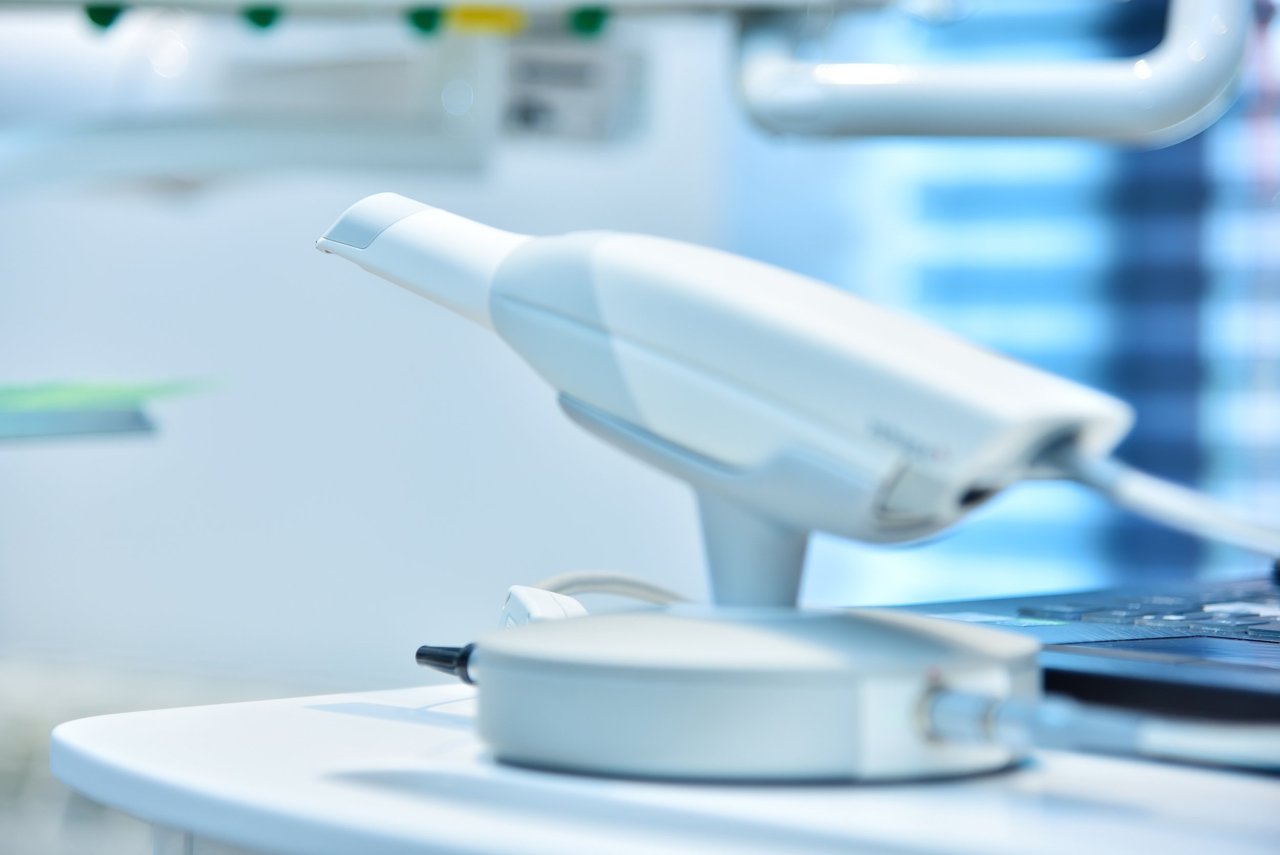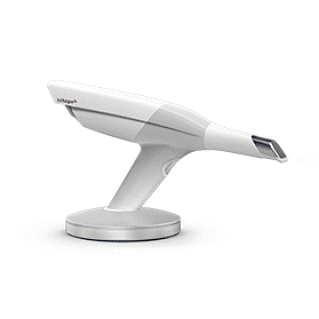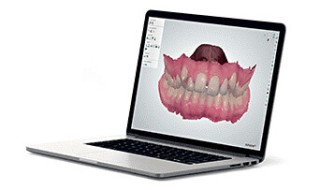
For crowns, bridges, inlays, veneers, prostheses, splints or braces, dentists first have to take an impression of the patient's dental situation. This impression can be generated digitally if an optical intraoral scanner is used. A digital impression is very precise; it is faster and more agreeable than conventional impression methods and can be examined directly on the screen.
If a tooth requires a crown, for instance, the dentist grinds the tooth and then records the current condition using an intraoral scanner. Instead of inserting impression material into the patient's mouth, the dentist uses a special video camera to scan the situation. This process results in a 3D model based on several individual high-resolution images. Scanning takes just a few minutes. The data captured during the process is transmitted electronically to a dental laboratory.
In the laboratory, the entire design of the crown is carried out digitally on the basis of this data, followed by its physical production. These methods are known in industry as CAD/CAM processes (Computer Aided Design / Manufacturing).
The dentist receives the crown just a few days later and can then fit it in the patient's mouth.

Digital impression is very comfortable for the patient; the process is precise and painless. This also makes it suitable for anxious patients. Another advantage is that patients are always very impressed when they see live images of their teeth and jaws on the screen. Digital impression is also much more agreeable than the conventional method: there is no need to insert an impression tray into the patient's mouth with a glue-like compound that smells unpleasant and needs several minutes to harden. And storing the digital data saves space and the records are very easy to retrieve.

3D data from the optical impression can be combined with data from digital volume tomography (3D X-ray). This makes it possible to plan and manufacture prosthetic work in advance, even when the scope is extensive.